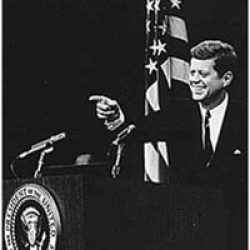Quick Takes
A group of engineers led by UW professor Gregg Vanderheiden ’72, MS’74, PhD’84 is making the Internet safer for those at risk from seizures. Many Web sites use flashing and flickering graphics, and such images can induce seizures in .025 percent of the population. Vanderheiden’s group created a tool to help software developers find out if their work might put people at risk. The group calls its creation the Photosensitive Epilepsy Analysis Tool, and it’s been downloaded by 1,000 users.
Three months after the UW cut ties with Nike, the athletic shoemaker agreed to compensate workers laid off by a subcontractor in Honduras. In April, the UW ended its Nike contract, citing treatment of the Honduran workers. In July, the company offered to spend $1.5 million to aid the workers.
Forty years ago in August, the four members of the New Year’s Gang detonated a bomb outside Sterling Hall, damaging the building and killing researcher Robert Fassnacht. The UW’s Oral History Program has now created a mixed-media package to mark the anniversary of the bombing, including an iTunes album, podcast, and mini-movie.
The Peace Corps announced that the UW ranks seventh among universities for the number of alumni currently serving, with 77 volunteers. The other UW (Washington) leads the nation with 101. Since the Peace Corps’s inception in 1961, UW-Madison has had 2,906 alumni serve, second most after the University of California-Berkeley’s 3,412.
The brain may be the most complex of human organs, but its development is guided by a single gene, according to a study led by Su-Chun Zhang, a UW anatomy and neurology professor. The findings about the gene, called Pax6, could help further research into treatments for diseases such as Alzheimer’s and Parkinson’s.
UW doctors swapped kidneys faster than they ever had before in July, when seven surgeons and eight patients (four donors and four recipients) matched up in the largest paired live-donor kidney exchange in the UW Hospital’s history. In a game of renal round robin, Lois Chupp gave up a kidney for Daniel Fabisiak, whose wife, Kelly, donated one to Carl Vitale ’84, whose brother Marc ’89, MA’90 donated one to Susan Rader, whose son John gave one to Michael Olson, whose mother- in-law is a friend of Chupp.
Published in the Fall 2010 issue


Comments
Joann Nett September 2, 2010
Thank-you for the article on UW doctors swapped kidneys, only
would’ve have liked to have read more , it would make for a
good article and help promote organ donation . THANKS !